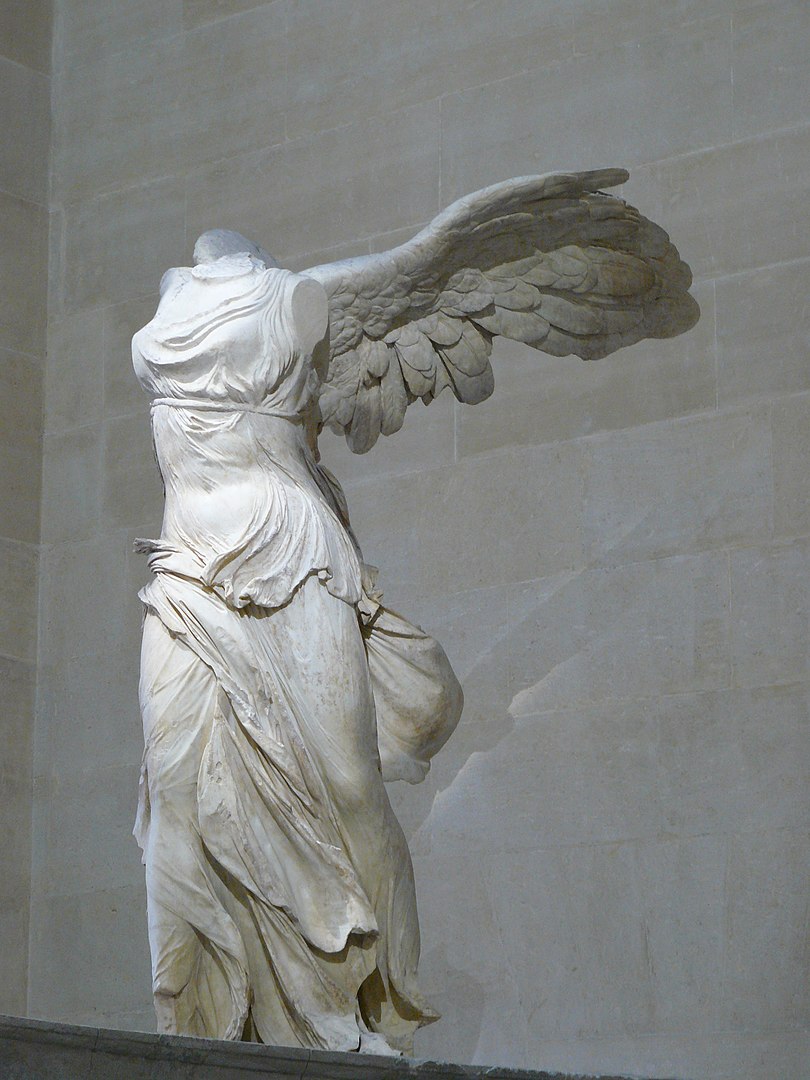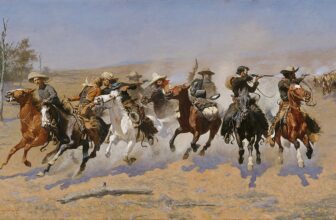
The head of The Winged Victory of Samothrace
What happened to the head of Nike of Samothrace?
The Winged Victory of Samothrace, also known as the Nike of Samothrace, stands as one of the most celebrated masterpieces of Hellenistic sculpture. Dating to approximately 200 190 BCE, this marble statue depicts Nike, the Greek goddess of victory, poised as if descending onto the prow of a ship. Despite its fragmented state, missing its head, arms, and feet, the statue exudes a dynamic sense of movement and grace, capturing the viewer’s imagination. Its discovery, subsequent restorations, and the enduring mystery surrounding its missing parts have intrigued scholars and art enthusiasts alike.
Discovery and Initial Excavations
In April 1863, French diplomat and amateur archaeologist Charles Champoiseau unearthed the Winged Victory on the island of Samothrace, located in the northern Aegean Sea. The statue was found in pieces within the ruins of the Sanctuary of the Great Gods, a site renowned for its religious significance in the ancient world. Champoiseau managed to reassemble 23 fragments of the statue, including significant portions of the body and wings. However, the head, arms, and feet were conspicuously absent, a fact that has fueled speculation and research ever since. My Modern Met
Subsequent Archaeological Efforts
Following Champoiseau’s initial excavation, several archaeological teams endeavored to locate the missing parts of the statue. In 1875, an Austrian team discovered fragments of the right hand, specifically the thumb and part of the ring finger. Decades later, in 1950, archaeologist Jean Charbonneaux uncovered the palm and the remainder of the ring finger. These fragments were subsequently reassembled and are now displayed alongside the statue at the Louvre Museum in Paris. Louvre
The Missing Head: Theories and Speculations
The absence of the head has led to various theories regarding its fate. Some scholars suggest that the head may have been destroyed during the statue’s fall or subsequent events, while others posit that it remains buried somewhere on Samothrace or was removed and lost over time. Despite numerous excavations and searches, the head has never been found, leaving its appearance to the imagination. World History Encyclopedia
Artistic Significance of the Missing Elements
Interestingly, the missing head and arms have not detracted from the statue’s acclaim; rather, they have contributed to its iconic status. The absence of these elements directs focus to the dynamic pose and intricate drapery, emphasizing the sense of movement and the skill of the sculptor. The surviving right hand, with fingers outstretched, suggests that Nike may have been making a gesture of greeting or victory, offering a glimpse into the statue’s original appearance. Smarthistory
Cultural and Historical Context
The Winged Victory of Samothrace is widely believed to have been sculpted to commemorate a naval victory, though the specific battle and the identity of the sculptor remain undetermined. The statue was likely an offering to the Great Gods of Samothrace, deities associated with protection at sea and in combat. In this context, the representation of Nike alighting on a ship’s bow can be interpreted as a gesture of gratitude for divine intervention in securing victory. National Endowment for the Humanities
Modern Display and Restoration
Since 1884, the Winged Victory has been prominently displayed at the Louvre Museum in Paris, positioned at the top of the Daru staircase. The presentation of the statue was modified in 1934 to enhance its visibility, and it has undergone various conservation efforts to preserve its condition. Despite the missing head and other parts, the statue continues to captivate visitors with its dynamic form and historical significance. Louvre
The enduring mystery of the missing head of the Winged Victory of Samothrace adds to the allure of this Hellenistic masterpiece. While the absent elements leave aspects of its original appearance to the imagination, they also highlight the exceptional artistry that conveys movement and emotion even in incomplete form. The statue remains a testament to the cultural and artistic achievements of ancient Greece, inspiring ongoing fascination and scholarly inquiry.
Why is it Called The Winged Victory of Samothrac
The Winged Victory of Samothrace is named after the Greek goddess of victory, Nike, and its discovery on the Greek island of Samothrace.
- Nike (the goddess): In Greek mythology, Nike represents victory, particularly in warfare and athletic competitions. The statue depicts Nike in a dynamic pose, with wings outstretched as if she is alighting or descending from the heavens, celebrating victory.
- Samothrace: This is the island where the statue was found in 1863, on the sanctuary of the Great Gods. The island was an important religious site, known for its mystery cults and association with the worship of deities like Nike, who were often linked to triumphs and divine powers.
The name “Winged Victory” refers to the statue’s portrayal of the goddess in flight, with her wings elegantly spread, and “Samothrace” refers to the place of its discovery. Thus, the name captures both the figure’s symbolism and the archaeological context.




